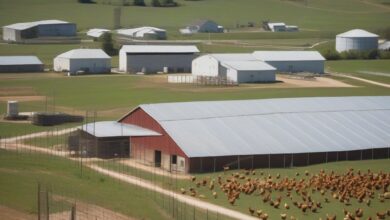California Child Presumed Infected with Bird Flu Virus
California Child Presumed Infected with Bird Flu Virus
In a concerning development, health officials in California are investigating a suspected case of bird flu in a child. This incident has sparked renewed fears about the potential risks of avian influenza, especially as winter approaches. While the situation is still evolving, it raises important questions regarding public health protocols, vaccination strategies, and steps individuals can take to protect themselves and their families.
What is Bird Flu?
Bird flu, or avian influenza, is a viral infection that primarily affects birds but can occasionally infect humans. The most concerning strain, H5N1, has been responsible for severe illness and fatalities in humans. Understanding the nature of this virus is crucial for recognizing its potential impact.
- Transmission: The virus is typically transmitted from birds to humans, generally through direct contact with infected animals or contaminated environments.
- Symptoms: Infected individuals may experience symptoms ranging from mild respiratory issues to severe pneumonia and even death.
- Prevention: Avoiding contact with sick birds and practicing good hygiene can help reduce the risk of infection.
The Recent Case: What We Know
The child suspected of being infected with the bird flu in California reportedly exhibited symptoms that raised concerns among health officials. The case is still under investigation, and samples have been sent for testing to confirm the presence of the virus. Local health departments are working closely with state and federal agencies to monitor the situation.
Background of the Incident
A 12-year-old child from a rural area of California began showing symptoms consistent with avian influenza after a recent visit to a poultry farm. The child’s symptoms include fever, cough, and difficulty breathing, which prompted immediate medical attention. Health officials are currently tracing potential exposure points to identify how the child may have come into contact with the virus.
Official Responses
Health authorities are taking this situation very seriously. They’ve issued several recommendations:
- Public Awareness: Educating the public about the risks associated with bird flu and the signs to watch for.
- Testing: Ensuring rapid testing and reporting for suspected cases to contain the spread effectively.
- Monitoring: Increased surveillance in areas where poultry farms are located.
Potential Risks to Public Health
The potential for bird flu to cross over into human populations poses significant public health risks. Although human infections are rare, they can occur, especially in individuals who are in close contact with infected birds. This case highlights the need for awareness and preparation. Here are some of the risks associated with bird flu:
- Transmission to Humans: The closer humans are to infected birds, the greater the risk of transmission.
- Severity of Illness: If contracted, the H5N1 strain can lead to serious respiratory illness and can be fatal.
- Global Spread: Containment of bird flu is critical; localized outbreaks could potentially lead to global transmission.
Preventive Measures
While current incidents underscore the importance of vigilance, there are several preventive measures individuals can take to safeguard against bird flu:
- Avoiding Direct Contact: Steer clear of sick or dead birds and ensure that children do not engage with them.
- Hygiene Practices: Wash hands thoroughly with soap and water after handling birds or visiting poultry farms.
- Vaccination: While there is no vaccine specifically for the bird flu that is available to the general public, timely vaccinations against seasonal flu can help reduce the burden of respiratory diseases.
What to Do If You Suspect Infection
In the unfortunate event that you or someone you know exhibits symptoms after potential exposure to birds, it’s crucial to seek medical advice promptly. Here are the steps to follow:
- Seek Medical Attention: Contact your healthcare provider immediately, especially if severe symptoms develop.
- Inform Healthcare Providers: Make sure to inform them of any recent exposure to birds or poultry farms.
- Follow Health Guidelines: Adhere to any testing or quarantine guidelines issued by health professionals.
Conclusion
As the investigation into this case continues, it serves as a crucial reminder of the complexities of zoonotic diseases—those transmitted from animals to humans. Public health officials stress the importance of remaining informed and vigilant, especially for families living near poultry operations or in rural areas. It is essential to stay updated on health advisories and take appropriate preventive measures to ensure your family’s safety as the situation unfolds.
By remaining proactive, we can collectively help mitigate the risks associated with avian influenza, allowing us to enjoy the beauty of nature while prioritizing health and safety. We will continue to monitor this case closely and provide updates as more information becomes available.
“`
This article is tailored to create interest and provide relevant information about the bird flu case and its implications for public health, while also being optimized for SEO.



